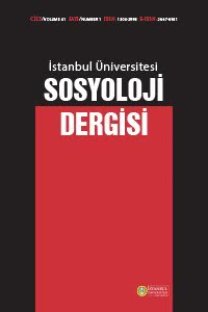Iran’s Second Demographic Transition and BelowReplacement Fertility: Implications for Population Policies
.,
___
- Atoh, M., Kandiah, V., & Ivanov, S. (2004). The second demographic transition in Asia? Comparative analysis of the low fertility situation in East and South-East Asian countries. The Japanese Journal of Population, 2(1), 42–75.
- Demeny, P. (1986). Pronatalist policies in low-fertility countries: Patterns, performance and prospects. In K. Davis, M. S. Bernstam, & R. Ricardo-Campbell (Eds.), Below-replacement fertility in industrial societies: Causes, consequences, policies (pp. 335–358). New York, NY: Cambridge University Press.
- Erfani, A. (2013). Fertility in Tehran city and Iran: Rates, trends and differentials. Population Studies, 1(1), 87–107.
- Erfani, A. (2015). Curbing family planning in Iran: An appraisal of Bill 446. Journal of Family Planning and Reproductive Health Care, 41(4), 317–318.
- Erfani, A. (2016). Levels, trends and correlates of abortion in Tehran, Iran: 2009-2014. International Perspectives on Sexual and Reproductive Health, 42(2), 93–101.
- Erfani, A. (2017). Curbing publicly-funded family planning services in Iran: Who is affected? Journal of Family Planning and Reproductive Health Care, 43(1), 37–43.
- Erfani A, & McQuillan, K. (2008). Rapid fertility decline in Iran: Analysis of intermediate variables. Journal of Biosocial Science, 40, 459–478.
- Folbre, N. (2000). Sleeping beauty awake: Feminism and fertility decline in the twentieth century. Social Research, 71(2), 343–356.
- Horga, M., Gerdts, C., & Potts, M. (2013). The remarkable story of Romanian women’s struggle to manage their fertility. J Fam Plann Reprod Health Care, 39, 2–4.
- Karimi, K. (2011). Trends of marriage and divorce rates in Iran: 1996-2006. In PSRC (Ed.), Population, policy, and sustainable development (pp. 39–63). Tehran, Iran: Population Studies and Research Center in Asia and the Pacific.
- Khalajabadi-Farahani, F., & Cleland, J. (2015). Perceived norms of premarital heterosexual relationships and sexuality among female college students in Tehran. Culture, Health & Sexuality, 17(3), 1–18.
- Khalajabadi-Farahani, F., Cleland, J., & Mehryar, A. H. (2011). Associations between family factors and premarital heterosexual relationships among female college students in Tehran. International Perspectives on Sexual and Reproductive Health, 37(1), 30–39.
- Khalajabadi-Farahani, F., & Kazemipour, S. (2011). Trends of one-child families in Iran since 1996: Implications for population policy. Paper presented at the UCL and Leverhulme Trust Conference on Human Population Growth and Global Carrying Capacity in May 2011. London, UK. Retrieved from http://www.ucl.ac.uk/popfootprints/poster_presentations
- Kohler, H.-P., Billari, F. C., & Ortega, J. A. (2002). The emergence of the lowest low-fertility in Europe during the 1990s. Population Development Review, 28(4), 641–680. Lesthaeghe, R. (1995). The second demographic transition in Western countries: An interpretation. In K. O. Mason & A. M. Jensen (Eds.), Gender and family change in industrialized countries (pp. 17–62). New York, NY: Oxford University Press.
- Lesthaeghe, R. 2010. The unfolding story of the second demographic transition. Population and Development Review, 36(2), 211–251.
- Lesthaeghe, R. (2014). The second demographic transition: A concise overview of its development. Proceedings from the National Academy of Sciences of the United States of America (Vol. 111, no. 51, pp. 18112–18115).
- Lesthaeghe, R., & Neidert, L. (2006). The second demographic transition in the United States: Exception or textbook example? Population and Development Review, 32(4), 669–698.
- McDonald, P. (2000). Gender equity and theories of fertility transition. Population and Development Review, 26(3), 427–440.
- Mills, M., Blossfeld, H.-P., & Klijzing, E. (2005). Becoming an adult in uncertain times: A 14-country comparison of the losers of globalization. In H.-P. Blossfeld, E. Klijzing, M. Mills, & K. Kurz (Eds.), Globalization, uncertainty and youth in society (pp. 393–411). New York, NY: Routledge Advances in Sociology Series.
- Ministry of Culture and Islamic Guidance. (2001). Values and attitudes of Iranians (Wave 1). Tehran, Iran: Ministry of Culture’s Office of the Survey of Values and Attitudes.
- Ministry of Culture and Islamic Guidance. (2003). Values and attitudes of Iranians (Wave 2). Tehran, Iran: Ministry of Culture’s Office of the Survey of Values and Attitudes.
- Motamedi, M., Merghati-Khoei, E., Shahbazi, M., Rahimi-Naghani, S., Salehi, M., Karimi, M., … Khalajabadi-Farahani, F. (2016). Paradoxical attitudes toward premarital dating and sexual encounters in Tehran, Iran: A cross-sectional study. Reproductive Health, 13(102), 1–10. https:// dx.doi.org/10.1186/s12978-016-0210-4
- Shojaei, J., & Erfani, A. (in press). Single-child families in Iran: Trends and patterns. Quarterly Journal of Social Sciences. Advance Online Publication.
- Teitelbaum, M. S., & Winter, J. M. (1985). The fear of population decline. Cambridge, MA: Academic Press.
- Thornton, A. (2001). The development paradigm, reading history sideways, and family change. Demography, 38, 449–465.
- Van de Kaa, D. J. (1987). Europe’s second demographic transition. Population Bulletin, 42, 1–59.
- Van de Kaa, D. J. (2001). Postmodern fertility preferences: From changing value orientation to new behavior. In R A. Bulatao & J. B. Casterline (Eds.), Global fertility transition. A supplement to Population Development Review, 27, 290–331.
- United Nations Population Division. (2017). World population prospects: 2017 revision. United Nations: New York, NY. Retrieved from https://www.compassion.com/multimedia/worldpopulation-prospects.pdf
- ISSN: 1304-2998
- Yayın Aralığı: 2
- Başlangıç: 2020
- Yayıncı: İstanbul Üniv. Edebiyat Fak. Sosyoloji Böl.
Suriyeli Mültecilerin Esnaflaşmasını Anlamada Bourdieucu Yaklaşımın Olanakları
Suriyeli Mültecilerin Esnaflşmasını Anlamada Bourdieucu Yaklaşımın Olanakları
Türkiye’de Kürtajın Yaygınlığı ve Kürtaj Kararını Etkileyen Faktörler
Türkiye’de Konut Sahipliği, Konut Koşulları ve Konut Kalite Endeksi
Erken Cumhuriyet Döneminde Sağlıklı Bireyin İnşası: Pronatalist Politikalar, Çocuk Sağlığı ve Verem
Erken Cumhuriyet Döneminde Sağlıklı Bireyin İnşası: Pronatalist Politialar, Çocuk Sağlığı ve Verem
